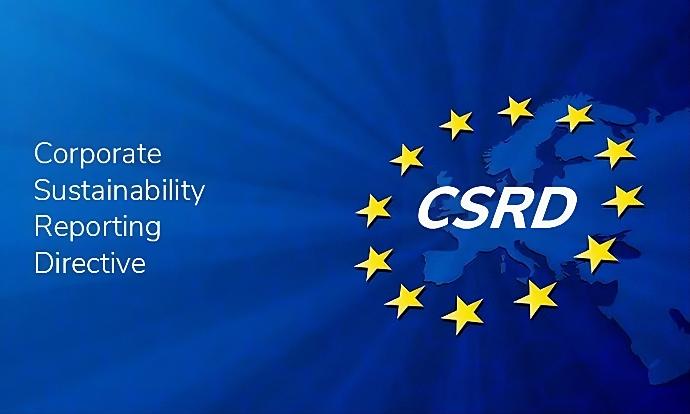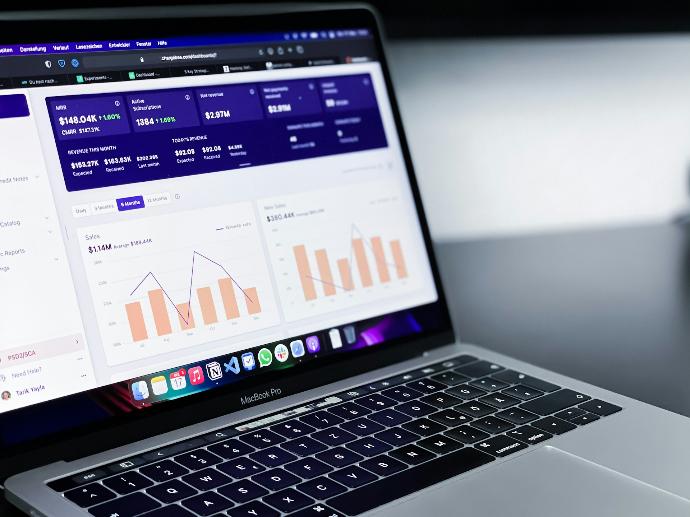The Corporate Sustainability Reporting Directive (CSRD) imposes new reporting requirements on over 50,000 companies within the European Union (EU) regarding sustainability and social responsibility. To meet these demands, organizations must adopt robust technological tools, and Enterprise Resource Planning (ERP) systems play a crucial role in this transition. Let's explore the keys to CSRD compliance and how ERP systems can help achieve these objectives.
Understanding the CSRD
What is the CSRD?
The CSRD is a European directive designed to strengthen and standardize sustainability reporting for companies operating in Europe, also known as "non-financial reporting." Replacing the Non-Financial Reporting Directive (NFRD), it requires companies to provide detailed information on their environmental, social, and governance (ESG) impacts, aiming to promote transparency and accountability.

What are the objectives of the CSRD directive?
Currently, the significance of environmental and social issues has increased due to various factors such as environmental degradation, climate change, and heightened social inequalities. Meanwhile, good corporate governance plays a crucial role in how investors and other stakeholders perceive a company.
The CSRD allows for the redefinition of the sustainability report, serving as a showcase for an organization's transparency and responsibility regarding ESG issues:
- Environmental impact (biodiversity, climate, circular economy, pollution, water preservation)
- Social impact (employees, value chain partners, consumers, end-users)
- Governance impact (ethical business conduct)
This directive also addresses several objectives related to optimizing the sustainability reporting process, which has been relatively unregulated until now:
- Harmonizing non-financial reporting across European companies to facilitate comparisons
- Expanding reporting obligations to more companies
- Increasing the availability, accuracy, and reliability of ESG data collected through a unified repository
- Enhancing companies' awareness of ESG risks and their environmental impact
What does the sustainability reporting required under the CSRD entail?
The non-financial reporting must include a detailed analysis of CSR (Corporate Social Responsibility) impacts:
- Data on sustainability strategy (goals, policies, commitments, key performance indicators)
- Information on ESG risks and opportunities
- Data on outcomes and performance
The construction of sustainability reporting also involves alignment with several directives complementary to the CSRD:
- Delegated Act: Determines specific reporting standards that companies must follow in implementing the CSRD
- ESRS (European Sustainability Reporting Standards): Set of criteria and guidelines, framed by the Delegated Act, detailing how companies should report information
- SFDR (Sustainable Finance Disclosure Regulation) taxonomy: European regulation clarifying the presentation of data related to sustainable finance
This report must also consider the central concept of the CSRD, namely "double materiality". This approach considers the following perspectives:
- Financial materiality (positive and negative effects of sustainability issues on financial performance)
- Impact materiality (positive and negative effects of company activities on the environment and society)
Once compiled, the sustainability reporting will be published electronically in a dedicated section within the company's management report.
Who is affected by the CSRD?
The CSRD applies to a broad range of companies meeting certain size and performance criteria:
- Large companies subject to the NFRD (in 2025 for the 2024 reporting period)
- Additional large listed and unlisted companies (in 2026 for the 2025 reporting period)
- Large publicly traded EU companies whose shares are traded on European markets (in 2026 for the 2025 reporting period)
- EU-based conglomerates and non-EU companies listed on a regulated EU market (in 2026 for the 2025 reporting period)
- Small and medium-sized enterprises or SMEs in the EU and non-EU entities listed on regulated EU markets (between 2027 and 2029 for reporting periods from 2026 onwards)
- Non-EU companies with large branches or subsidiaries in the EU (in 2029 for the 2028 reporting period)
Companies must collect, analyze, and report detailed ESG data to comply with the directive's requirements.

Challenges of CSRD compliance
Data collection and management
ESG data collection poses a significant challenge. Companies must gather accurate and relevant information from various internal and external sources. Effectively managing this data requires tools capable of centralizing and automating its processing, such as an ERP. such as an ERP.
Reporting and transparency
CSRD reporting requires complete transparency and accuracy of the information provided. Companies must produce regular and detailed reports, clearly and accessibly accounting for their ESG performance.
Verification and audit
Compliance with the CSRD involves rigorous audits to verify the accuracy of reported data. Companies must ensure that their data collection and reporting processes are robust and auditable to pass compliance audits.
The role of ERP in CSRD Compliance
Data centralization
ERPs enable you to centralize all relevant data within a single system. This centralization facilitates the management and analysis of ESG data, ensuring increased consistency and accuracy in your reporting.
Process automation
ERPs ERPs can automate many data collection and reporting processes, thereby reducing human errors and delays. Automation also optimizes your operational performance and enables real-time tracking of ESG indicators.
Tracking and management of sustainability indicators
ERPs provide advanced functionalities for tracking sustainability indicators. Dashboards and automated reports enable your company to continuously monitor its ESG performance and make better decisions to improve its impact.

Steps to integrate CSRD Compliance into your ERP
Evaluate your compliance needs
The first step is to assess your company's compliance needs regarding CSRD. This includes identifying the necessary ESG data and evaluating your ERP's current capabilities to manage these requirements.
Select and customize your ERP
Choosing an ERP Choosing an ERP capable of meeting CSRD requirements is crucial. Your ERP should be customized to include the necessary modules and features for collecting, analyzing, and reporting ESG data.
Train and raise awareness
It's essential to train your employees and stakeholders in using ERP tools for CSRD compliance. Specific training programs can help maximize efficiency and ensure successful adoption of new reporting practices in your company.
Promote tracking and continuous improvement
Regular monitoring of ESG performance and reporting processes is crucial for maintaining compliance. You should establish mechanisms for feedback and continuous improvement within your company. These processes will be based on experiential feedback to ensure that your practices remain up-to-date and efficient.
Conclusion
ERP plays an indispensable role in CSRD compliance by facilitating data centralization, automation, and management of ESG data. By adopting best practices and choosing suitable ERP systems, companies can not only comply with regulatory requirements but also enhance their transparency and accountability regarding sustainability. This strategic integration is essential for navigating the complex regulatory landscape and building stakeholders' trust in the company's ESG performance. As an expert ERP integrator, Captivea can accompany you throughout the entire process of implementing and deploying your software.
integrate easily your erp with captivea
Captivea, en tant que leader mondial de la mise en œuvre d'Odoo, est le meilleur partenaire Odoo que vous puissiez choisir !
Don't hesitate to contact us!